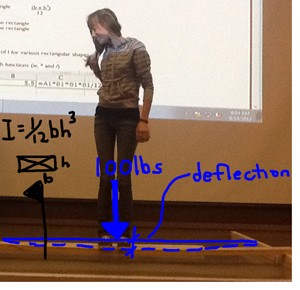
UC s Integration of Technology into Architecture Curriculum Wins AIA Award
The art of designing buildings and the science of constructing them and all their complex systems ventilation, water, electric, electronic and more are increasingly performed in 3-D thanks to advances in computing power combined with decreased costs for that power.
According to Anton Harfmann, associate professor in UCs
School of Architecture and Interior Design (SAID), about 25 to 30 percent of architectural practices in the United States are making use of whats called Building Information Modeling (BIM) software, and that number is only expected to grow.
He explained, In the last five years, BIM technology has been increasingly adopted by firms because high-speed computing hardware is now so affordable and the software available now can carry enormous data sets that help precisely model a building and all of the structural and system relationships within it. BIM software is now a realistic tool vs. an experimental one.
So that architecture students within UCs College of Design, Architecture, Art, and Planning (DAAP) can be prepared to work and lead in firms adopting this technology, sophomore students in Harfmanns required "Design Science" lecture course must complete design modeling assignments using the latest BIM technology.
This lab with laptops as I like to call it sets the students up to be the experts in this technology when they go on their first cooperative education terms, because a large percentage of firms are still 2-D based. The students can provide expertise as these firms begin to use the software. The students become co-op heroes, and many of them have come back from co-ops to thank me for the pain I put them through in learning and working with the software in my class, said Harfmann, who has used the BIM software in his Design Science course for four years now and who routinely makes presentations to practitioners and educators regarding the integration of BIM technology into the design curriculum.
Most recently, his teaching endeavors with the BIM software have earned him
one of only five national awards
from the American Institute of Architects Technology in Architectural Practice (TAP) group. He will receive that award during the AIAs June 20-22 convention in Denver, Colo.
During Fall 2013, Harfmann will not only teach sophomore architecture students in his Design Science course but will also open the course to architecture graduate students from DAAP and sophomore architectural engineering students from UCs College of Engineering and Applied Science (CEAS).
This technology is so valuable for practitioners (and students) because it builds a strong bridge between theoretical compositional design and construction reality. It allows for more design experimentation in terms of choice of materials, wall thicknesses or any other elements within a buildings design and construction.
The course and the tools in it are about precisely modeling the relationships between all the components in a building, not just the static, individual elements. The clear advantage to this approach is that if a change is necessary in one or more elements as is often the case you no longer have to do a complete remodeling or start completely over, as would be the case with a 2-D design. The students in my course can quickly adjust their 3-D models to accommodate the specifics of their design choices, stated Harfmann, who credits UCs Center for the Enhancement of Teaching & Learning (
) for helping him to adapt his course to the semester calendar.
- Apply to UCs undergraduate program in architecture.
- Apply to UCs undergraduate program in architectural engineering.
- Apply to UCs graduate program in architecture.
Related Stories
UC education allowed couple to make mark on Cincinnati
April 24, 2024
As a native of Defiance, Ohio, John Deatrick, CEAS ’79, says arriving in Cincinnati to attend the University of Cincinnati in 1963 felt like landing in New York City.
Engineering student studying flight physics of birds
April 24, 2024
After earning a bachelor's degree in mechanical engineering in Nepal, Sameer Pokhrel came to the United States to further his education. From an early age, he had a lifelong fascination with aviation. As an adult, he transformed this fascination into a career, pursuing a doctoral degree in aerospace engineering at the University of Cincinnati's historic program. Here, he has succeeded in research, instruction, and was recently named Graduate Student Engineer of the Month by the College of Engineering and Applied Science.
The graduating class of 2024 shares creative works across 15...
April 24, 2024
DAAP’s Graduating Class of 2024 shares creative works across 15 interdisciplinary degree programs at DAAPworks.
